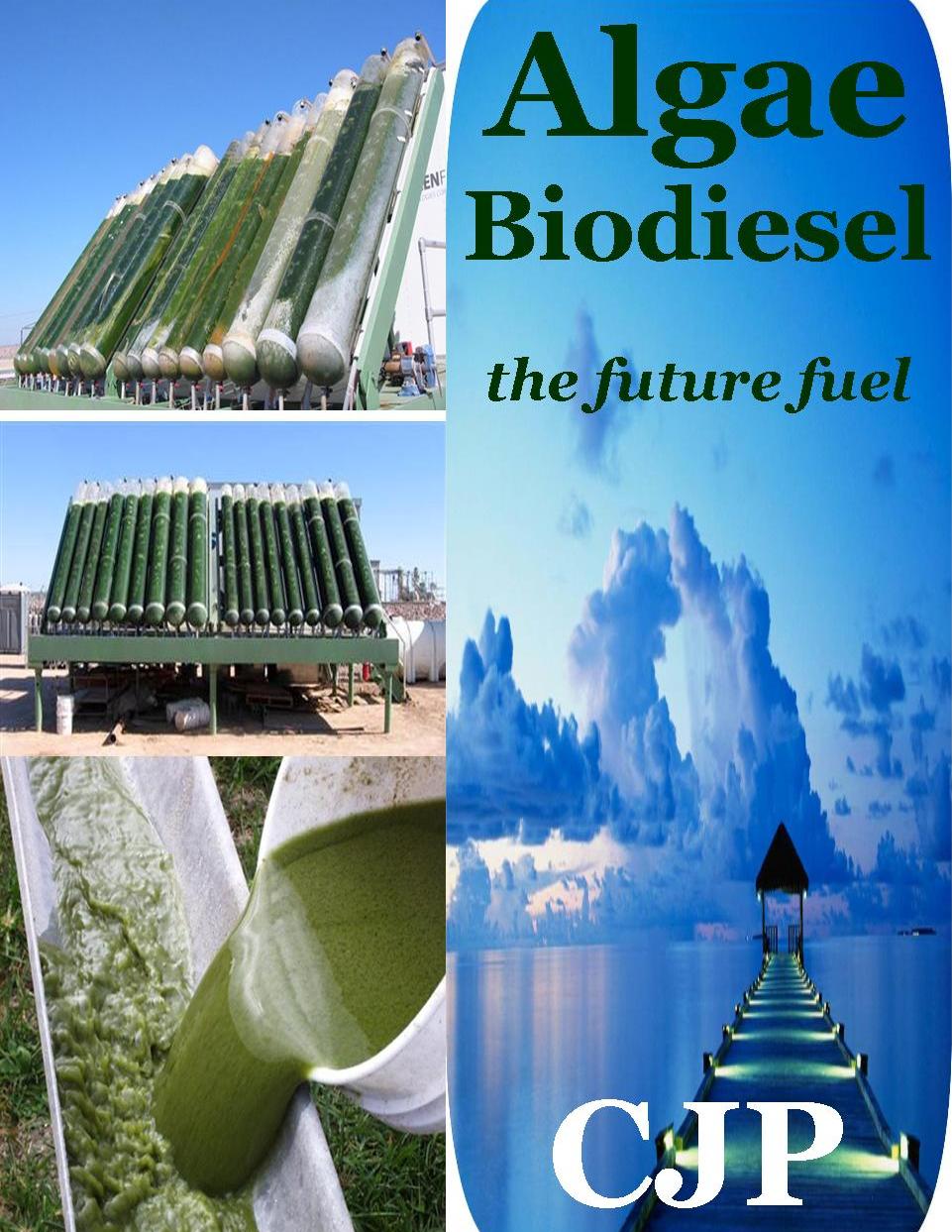 |
|
|||
|
|
| |
 |
Microalgae are currently cultivated commercially for human nutritional products around the world in several dozen small- to medium-scale production systems, producing a few tens to a several hundreds of tons of biomass annually. Algae are simple organisms that range from very small, single-celled microalgae to microalgae that group into very large organisms such as kelp. There are more than 300,000 species of algae in global algae culture collections. The vast majority of algae are photosynthetic, deriving energy from the sun to produce energy and biomass. Algae are grown commercially around the world, primarily for nutritional, feed, and specialty product use.. Total world production of dry algal biomass for these algae is estimated at about 10,000 tons per year. About half of this produced takes place in mainland China, with most of the rest in Japan, Taiwan, U.S.A., Australia and India, and a few small producers in some other countries. The primary requirements for growing algae are sunlight, water, and carbon dioxide (CO2). Algae also require nutrients and environmental conditions appropriate to the specific algal species. Algae productivity is dependent on carbon intake, as carbon constitutes over 50% by weight of Algae Biomass. Algae can consume high concentrations of CO2 (between 5-30%) as it is emitted from power, cement and chemical plants before it is absorbed into the atmosphere. Atmospheric CO2, at less than 0.04%, need to be supplemented with additional CO2 to deliver high productivities. Microalgae are selected based on a number of factors, most notably high innate growth rates, favorable overall composition (lipids, carbohydrates, and proteins), and ability to grow in specific climatic conditions. There are a number of variables including innate growth rate per species and seasonal availability of sunlight. Under optimum growth conditions algae can produce up to 20,000 gallons of oil/acre/year. Micro-algae are the fastest growing photosynthesizing organisms. They can complete an entire growing cycle every few days. Algae contain Lipids and fatty acids as membrane components, storage products, metabolites and sources of energy. . Some of the micro-algae may contain up to 60% fat. Once the lipid is extracted, the remaining becomes a good animal feed. Benefits of Algal Ø Impressive Productivity: Microalgae, as distinct from seaweed or macroalgae, can potentially produce 100 times more oil per acre than soybeans—or any other terrestrial oil-producing crop. Ø Non-Competitive with Agriculture: Algae can be cultivated in large open ponds or in closed photobioreactors located on non-arable land in a variety of climates (including deserts). Ø Flexible on Water Quality: Many species of algae thrive in seawater, water from saline aquifers, or even wastewater from treatment plants Ø Mitigation of CO2: During photosynthesis, algae use solar energy to fix carbon dioxide (CO2) into biomass, so the water used to cultivate algae must be enriched with CO2. This requirement offers an opportunity to make productive use of the CO2 from power plants, biofuel facilities, and other sources. Ø Broad Product Portfolio: The lipids produced by algae can be used to produce a range of biofuels, and the remaining biomass residue has a variety of useful applications:—combust to generate heat—use in anaerobic digesters to produce methane—use as a fermentation feedstock in the production of ethanol— use in value-added byproducts, such as animal feed The possibilities for algae continue to evolve. We focus on fast-growing algae and using waste/salty water/nondrinking-nonagricultural water to grow it. As the algae are growing, it cleans the water and the air. We are enhancing the environment, while producing energy. One advantage is that water used to grow fast-growing algae contains high nutrients, so nutrients can be recycled and money and water can be saved. We continue to search for the least cost, most efficient oil extraction methods which are the key to a successful green fuel project involving algae. There are several uses for algae that can be profitable in the short-term. CJP is playing a vital role to utilize the algal resource effectively for production of biodiesel and bringing it to a commercial scale, and undertaking research to screen the biodiesel potential of existing strains of native species and, assessment of field cultivation with a view to establishing open pond cultivation/ Photobioreactor augmenting biodiesel production Algae Biofuel: Advantages to India Algae is the 2nd generation biofuel and can be an ideal solution for India’s impending fuel crisis, as India’s long coastal region and tropical climate can facilitate the cultivation of algae in India in mass scale. This calls for strong and dedicated efforts from Government and industries.
Algae are naturally growing organisms and are very diverse in nature. Different algal strains have different properties. Since the major concern is to choose such an algae strain which is easily available in the location, can multiply easily at the prescribed location and has maximum quantity of lipid/oil content in it so that it can be used to produce biodiesel. Algae absorb carbon dioxide and nutrients from the water and make oil out of their biomass, while producing oxygen. Algae reproduce themselves non-sexually; they divide themselves into two cells, grow bigger and divide again. The isolation and purification to obtain pure strains of microalgae have already been started and are being done successfully in this laboratory There are a large number of strains available and some of them are:
Choosing an Algae Important characteristics of Algae · High % of total biomass is oil · Maintains a high % of oil even under stress · Compatible with the Specific climate The algal strains to be cultivated would be selected based on many criteria, of which oil content, productivity, and harvest ability would be primary, but also resistance to contamination, tolerance of high oxygen levels and temperature extremes, and adaptation to the local water chemistry and other local conditions experienced by the algal cells in the growth ponds. For harvesting, further concentration and oil extraction is required, for which various processes are proposed, including cell breakage and solvent extraction, possibly using a three phase centrifugation. The residual biomass could be either sold as animal feed or, more plausibly at present, converted to biogas, for use in on-site power production, with the residual nutrients (and carbon) recycled back to the growth ponds. ALGAL STRAINS CURRENTLY MASS CULTURED
Chlorella vulgaris Haematococcus pluvialis Dunaliella salina Spirulina (Arthrospira platensis)
Theoretical maximum yields of few microalgae in open ponds:
The successful growth of algae is more or less an art and a daily tightrope act with the aim of keeping the necessary prerequisites and various unpredictable events involved in algal mass cultivation in a sort of balance. Microalgae cultivation using sunlight energy can be carried out in open or covered ponds or closed photo bioreactors, based on tubular, flat plate or other designs.
Microalgae have the potential to produce more biofuel per acre than any other potential source. The basic idea with algae is that some algae have a high lipid (fat) count, which can be turned into biodiesel. Algae can grow very fast, so the productivity is faster than corn or other possibilities to biofuels. It can be grown on water bodies, so it doesn’t compete for prime agriculture land. It can grow in both fresh and salt water, even if the water is polluted. Many areas of world/country are ideally suited for algae growth since algae needs large amounts of sunlight, brackish water and carbon dioxide. Those conditions are typical in the costal regions. We are committed to the fact that algae are the best long-term feedstock for biodiesel. The possibilities for algae continue to evolve. We focus on fast-growing algae and using waste/salty water to grow it. As the algae are growing, it cleans the water and the air. We are enhancing the environment, while producing energy. One advantage is that water used to grow fast-growing algae contains high nutrients, so nutrients can be recycled and money and water can be saved. We continue to search for the least cost, most efficient oil extraction methods which are the key to a successful green fuel project involving algae. There are several uses for algae that can be profitable in the short-term. In fact algae are the highest yielding feedstock for biodiesel. It can produce up to 250 times the amount of oil per acre as soybeans. Producing biodiesel from algae may be one of the ways to produce enough automotive fuel to replace current fossil fuel usage. Algae produce 7 to 31 time greater oil than palm oil. It is very simple to extract oil from algae. The best algae for biodiesel would be microalgae. Microalgae are an organism capable of photosynthesis that is less than 2 mm in diameter. Macroalgae, like seaweed, is not as widely used in the production of biodiesel. Microalgae has much more oil than macroalgae and it is much faster and easier to grow Microalgae can provide several different types of renewable biofuels. These include methane produced by anaerobic digestion of the algal biomass biodiesel derived from microalgal oil and photobiologically produced biohydrogen. The idea of using microalgae as a source of fuel is not new but it is now being taken seriously because of the escalating price of petroleum and, more significantly the emerging concern about global warming that is associated with burning fossil fuels The greatest benefit of algae biofuels over other alternative fuels comes from the fact that they can be used in cars and airplanes without any modifications to the currents design of the machines. The critical issue, after technical feasibility, that is the actual ability to reliably cultivate algal strains that can produce oil at reasonably high productivities, is the overall capital and operating cost of these production systems. The problems in accurately determining the economic viability are accentuated by the fact that there are no large-scale commercial algae biofuels production systems with which to develop and substantiate data. The companies that are developing new technologies and architectures are very protective of their detailed financial data. As such we have we have arrived some authentic data’s from our own experiences and databank. Oil from algae is projected at $2 per gallon, headed towards $1 per gallon For detailed Cost-Benefit Analysis of Algae Harvesting, kindly mail to jatrophaplan@gmail.com or contact Algae Biodiesel Business Plan Concept to Commercialization Nonfood Biodiesel Feedstock Project
Centre for Jatropha promotion & biodiesel (CJP) has been working in the field of nonfood oil crops promotion for biodiesel production and become a pioneer of Biodiesel nut Plantation &Production. CJP’s research findings and on-hand field experiences in respect of various technical, agronomical/silvicultural aspects of plantations of Jatropha and other nonfood biodiesel crops in various categories of land as well under different plantation models have resulted in significant improvements in knowledge and technical background related to Productivity, profitability and sustainability of commercial production of nonfood biodiesel Crops. Based on our proprietary knowledge and extensive experience gained we have developed Based on our proprietary knowledge and extensive experience gained we have developed and enhanced a wide range of Products for creating a “FALESAFE FUEL FARM” With its extensive experiences in the field, enhanced technology, plant science & professional knowledge, effective consulting service and business intelligence CJP can clearly understand the business model, products and services, production, marketing and provides all aspects of feasibility analysis and business development including assessments of the following: crop production, crushing, co-product markets, feedstock acquisition and contracting, technology analysis, risk analysis specific to biodiesel technology, feedstock, markets, and general project risks, market and financial analysis. We make the integration of our experience and professional knowledge with your information. We provide in Depth analysis of Algae Harvesting part of plan for which we have team of agronomist and plant scientists, and then we have engineers and experts in biodiesel industries to finish the technology and production part of business plan. We have professionals in accounting to complete financial and economics part. CJP can offer the type of consulting that only numerous years of leadership in the biodiesel market can provide at an affordable price. We identify the Key elements in harvesting algae and their effects examined. And provide accurate information about the crop for potential investors and growers after performing feasibility study with a concert concept to commercialize the opportunity with following in-depth assessment/examination. Description of the Business Opportunity
CJP can help clients identify the needs, opportunities and solutions of their local, regional and national markets. By identifying these needs and providing management direction, CJP can help in creating a perfect business plan in order to develop and manage an effective and successful biodiesel facility. The most critical component of any business plan is the pro forma, an educated view or projection of what the performance of a company is capable of, given a specific set of assumptions and conditions. CJP has been involved in identifying these needs for specific projects for a number of years and can help develop a realistic and obtainable:
These projections will be valuable in determining feasibility of the project, securing financing, attracting investment and guiding management so that the company can reach its full potential. For a detailed quote for a complete and comprehensive ALGAE Biodiesel Business Plan from Algae harvesting to fuel, kindly mail to jatrophaplan@gmail.com ALGAE PHOTO BIOREACTOR: SMALL SCALE ALGAE HARVESTING CJP has developed a unique Photobioreactor for demonstration and testing purpose and all prospective companies/organization should install the demonstration plant to start with algae so they can customize the mix of algae species and nutrients for the climatic conditions and water quality of the plant’s location and take appropriate decision for big investment Many species of algae had the potential to produce sufficient quantities of oil to be economical feedstocks for biodiesel production. However, the most efficient method of raising algae—in open, racetrack-style ponds—was prone to contamination from undesirable algae species, and a lot of water was wasted through evaporation. Closed systems called Photobioreactors didn’t have the contamination and evaporation problems, but were expensive and experienced engineering problems.
CJP’s: PBR: Type: Small Scale It is a closed system assembly of six tubes having an overall capacity of 84 liters. The structure is made up of wood and the whole structure is mounted on the steel stand with castor wheels for the movement of the reactor. The tubes are 2 meters in length with the O.D. of 100mm and I.D. of 94mm. A carbon dioxide cylinder is installed in the design to circulate carbon dioxide through the closed system of six tubes for photosynthesis. The outlet of the cylinder is fed to the bottom of the first tube and the tubes are connected by a piping system which connects the top of the first tube to the bottom of the second tube and goes on till the last tube. However, gas from the outlet of the last tube is re-circulated to the first tube using an air pump with the installation of Non Return Valves at appropriate positions. To have detailed information and quote, kindly mail to algaebdiesel@gmail.com or contact Assistant Director, CJP |
© 2004- 2025 ABC-Advanced Biofuel center ,, All Rights Reserved |

 No single feedstock is likely to solve the supply issues facing the biodiesel industry. As it diversifies beyond traditional oilseed crops—soybeans and rapeseed—exotic solutions such as nonfood crops and algae could play a vital role in biodiesel’s future.
No single feedstock is likely to solve the supply issues facing the biodiesel industry. As it diversifies beyond traditional oilseed crops—soybeans and rapeseed—exotic solutions such as nonfood crops and algae could play a vital role in biodiesel’s future. Economics: Algae Biodiesel
Economics: Algae Biodiesel A feasibility study and a business plan are essential steps in developing a successful biodiesel business. However it is not easy to prepare an excellent business plan.
A feasibility study and a business plan are essential steps in developing a successful biodiesel business. However it is not easy to prepare an excellent business plan.